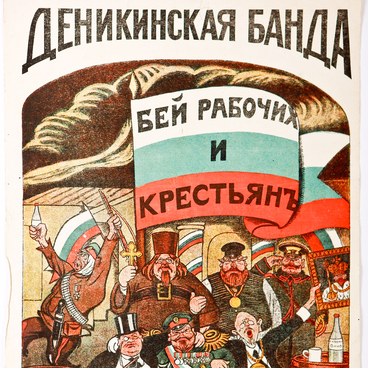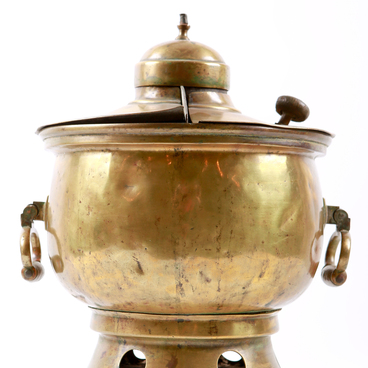The Kasimov Museum-Reserve houses a rushlight holder made in the 19th century. It was used for lighting rooms.
The rushlight holder was a stand for a rushlight — a thin wooden chip that was lit at one end. Birch or pine wood chips were used more often, as they burned brightly without producing fumes. Such fixtures could illuminate only a part of the house, so in the evenings a few splinters at the same time were lit.
In Rus, rushlight holders began to be used in the 10th century. Firstly, they were made of old horseshoes, because at that time the metal was in short supply. Rushlight holders became widely popular in the late 18th century, when a duty on wax and tallow candles was introduced. Rushlights were not taxable, so such lighting was inexpensive.
One could find a rushlight holder in almost every village hut. However, such a means of illumination was dangerous — although the rushlight was burning for a short time, the hot embers could set the floor on fire. To avoid a fire, a bucket of water or sand was placed near the rushlight holder so that coals and ashes fell in such a backet. Thanks to the weighted stand in the form of a hoop or cross, the item was more stable.
Rushlight holders differed in size, material and form. For example, there were pendant, table and floor ones. Rushlight holders in the form of wooden troughs on three or four legs were the most convenient. A wooden post was attached to its edge, which was crowned with a forged metal lamp. Water was poured into the trough, and coals of a burning rushlight fell in it.
Such lamps were of practical and also decorative value: they were an element of the interior and decorated the house. The most varied in decor were floor rushlight holders forged of iron. Blacksmiths decorated them with spirals, swirls, floral ornaments and even turned them into birds: some rushlight holders’ forks had the shape of a peacock tail or firebird feathers.
In Russia, rushlight holders have been a part of everyday life in villages for a long time. They were used until the 1940s, when electric lighting became widespread.
The rushlight holder was a stand for a rushlight — a thin wooden chip that was lit at one end. Birch or pine wood chips were used more often, as they burned brightly without producing fumes. Such fixtures could illuminate only a part of the house, so in the evenings a few splinters at the same time were lit.
In Rus, rushlight holders began to be used in the 10th century. Firstly, they were made of old horseshoes, because at that time the metal was in short supply. Rushlight holders became widely popular in the late 18th century, when a duty on wax and tallow candles was introduced. Rushlights were not taxable, so such lighting was inexpensive.
One could find a rushlight holder in almost every village hut. However, such a means of illumination was dangerous — although the rushlight was burning for a short time, the hot embers could set the floor on fire. To avoid a fire, a bucket of water or sand was placed near the rushlight holder so that coals and ashes fell in such a backet. Thanks to the weighted stand in the form of a hoop or cross, the item was more stable.
Rushlight holders differed in size, material and form. For example, there were pendant, table and floor ones. Rushlight holders in the form of wooden troughs on three or four legs were the most convenient. A wooden post was attached to its edge, which was crowned with a forged metal lamp. Water was poured into the trough, and coals of a burning rushlight fell in it.
Such lamps were of practical and also decorative value: they were an element of the interior and decorated the house. The most varied in decor were floor rushlight holders forged of iron. Blacksmiths decorated them with spirals, swirls, floral ornaments and even turned them into birds: some rushlight holders’ forks had the shape of a peacock tail or firebird feathers.
In Russia, rushlight holders have been a part of everyday life in villages for a long time. They were used until the 1940s, when electric lighting became widespread.


